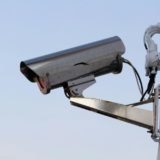Film Speed: Everything You Need to Know

Introduction:
Film speed, also referred to as ISO, is a crucial aspect to consider when it comes to photography. Understanding film speed is essential for both beginner and professional photographers as it directly affects the quality and overall outcome of their photographs. In this article, we will provide a comprehensive overview of film speed, its historical development, and its significance in the world of photography.
What is Film Speed and Why is it Important?

Film speed is a measure of a film’s sensitivity to light. It determines how quickly a film reacts to the incoming light and how accurately it captures the details, colors, and tones of a scene. In simple terms, film speed represents the film’s ability to record light and produce a well-exposed image. It is denoted by an ISO number, such as ISO 100, ISO 400, etc.
Understanding the film speed is crucial because it directly affects the exposure triangle, which consists of aperture, shutter speed, and ISO. The film speed, along with the aperture and shutter speed, determines the overall exposure of the image. Choosing the right film speed allows the photographer to capture the desired level of detail, adjust for various lighting conditions, and achieve the desired artistic effect.
Historical Development of Film Speed:
The concept of film speed dates back to the early days of photography when glass plates were used instead of film. In the late 19th century, the first standardized film speed system was introduced by the famous French photographer, Louis Dufay. He assigned numerical values to different films based on their sensitivity to light.
Over time, various film speed systems were developed by different manufacturers, making it challenging for photographers to compare films accurately. In 1974, the International Organization for Standardization (ISO) introduced a unified film speed system known as the ISO film speed rating. This system assigned a standard film speed value to each film, ensuring consistency and simplifying the process of selecting the right film for photographers worldwide.
Understanding ISO Numbers:
ISO numbers represent the film’s sensitivity to light. Higher ISO numbers indicate greater sensitivity, allowing photographers to shoot in low-light conditions or capture fast-moving subjects. Conversely, lower ISO numbers indicate lower sensitivity, suitable for well-lit scenes and static subjects.
It’s important to note that higher ISO numbers also introduce more digital noise or grain into the image. The trade-off between sensitivity and image quality is crucial, and photographers need to balance these factors based on their shooting requirements.
The Importance of Film Speed in Different Situations:
Film speed plays a crucial role in various photography scenarios. Here are a few examples of how film speed affects the outcome:
1. Low-Light Photography: When shooting in dimly lit environments, using a higher ISO film allows photographers to capture more light, resulting in properly exposed images. A film with an ISO range of 800-3200 is ideal for low-light photography.
2. Action and Sports Photography: To freeze the motion of fast-moving subjects, a higher film speed is necessary. Using a film with an ISO of 400 or above ensures sharp and blur-free action shots.
3. Landscape Photography: For capturing the fine details and dynamic range of landscapes, lower ISO films, such as ISO 100 or 200, are preferred. These films provide higher image quality, reduced noise, and improved color accuracy.
Featured Snippet:
For photographers seeking to delve deeper into the technical aspects of film speed, here are some key points to keep in mind:
– Film speed is represented by ISO numbers and reflects a film’s sensitivity to light.
– Higher ISO numbers allow for shooting in low-light conditions and capturing fast-moving subjects, but introduce more noise into the image.
– Lower ISO numbers are suitable for well-lit scenes and static subjects, providing higher image quality.
– ISO 100-200 is ideal for landscape photography, ISO 400 for action, and sports photography, while ISO 800-3200 works well in low-light situations.
– The ISO film speed system was standardized by the International Organization for Standardization in 1974, simplifying the process of selecting film for photographers worldwide.
Conclusion:
Film speed, or ISO, is a fundamental concept in photography that significantly impacts image quality and exposure. Understanding how different ISO numbers affect the outcome enables photographers to make informed decisions and achieve their desired artistic vision. Whether shooting landscapes, action, or low-light scenarios, choosing the right film speed ensures well-exposed and visually appealing photographs. So, next time you pick up your camera, consider the film speed and let it guide your creative journey.

















